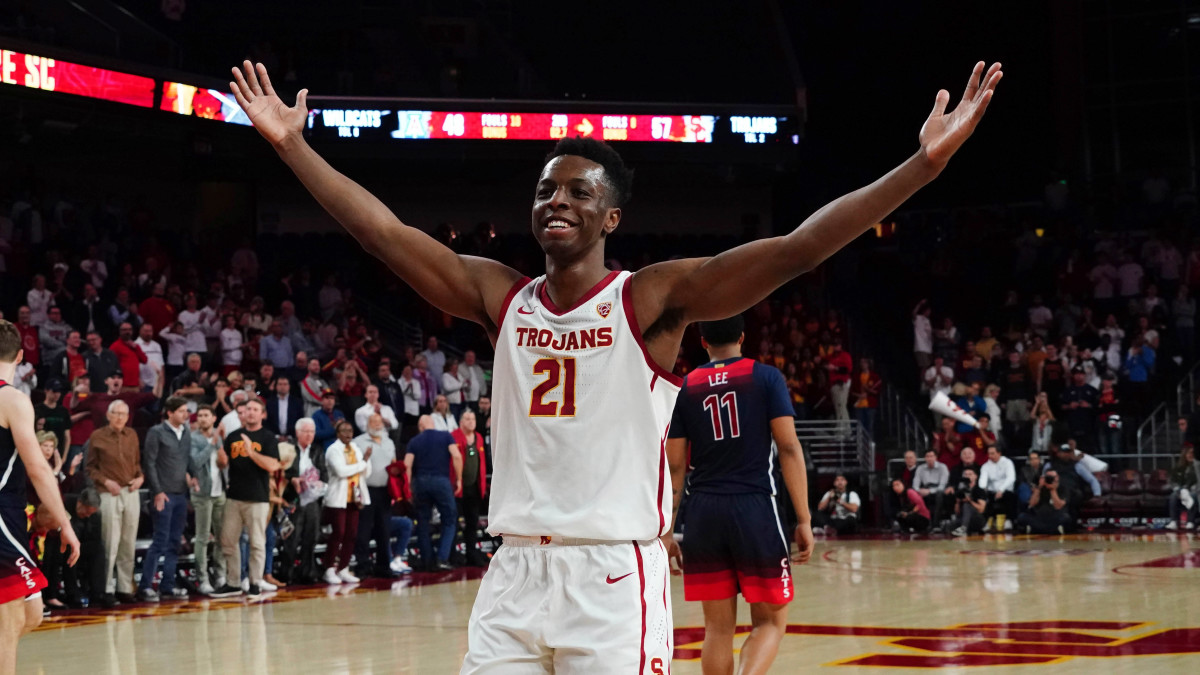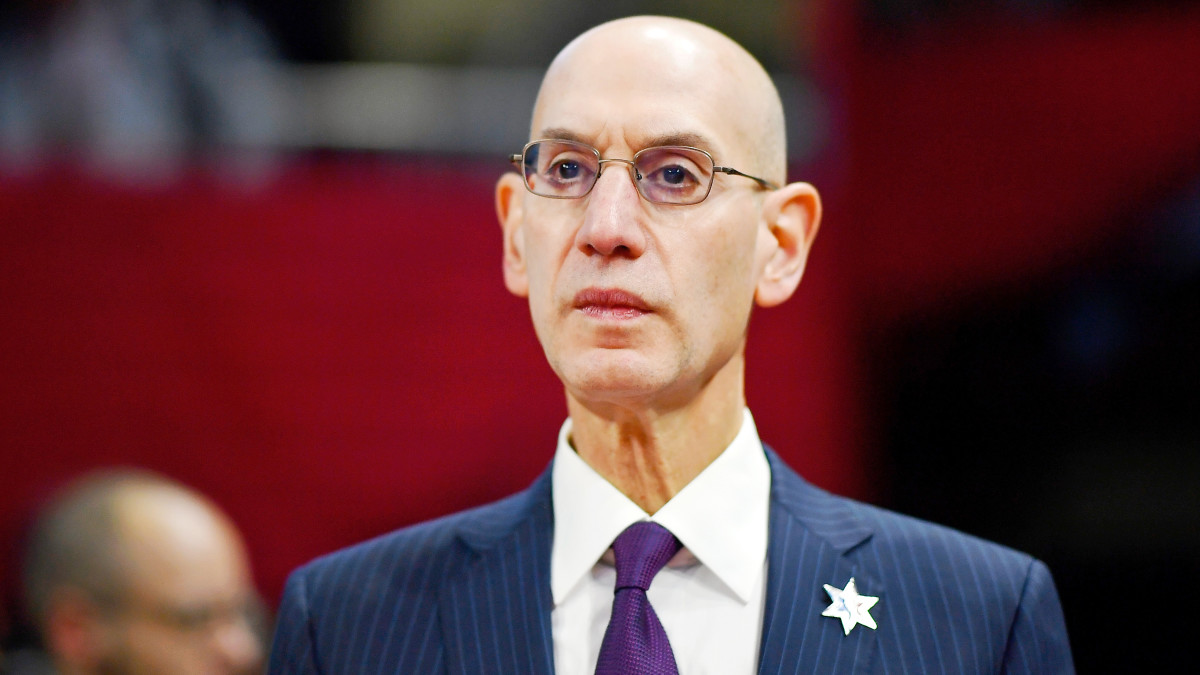The Case for Anthony Edwards, According to Georgia Head Coach Tom Crean
Wondering what you’re reading? Welcome to The Crossover’s NBA Draft newsletter, bringing you exclusive content, intel and analysis as the 2020 draft draws near.
You’d be pressed to find anyone more familiar with Anthony Edwards than Tom Crean, who coached the projected top pick at Georgia and will in all likelihood be on speed dial for NBA teams over the next few weeks. In an exclusive interview with SI, Crean shed light on Edwards’ time in college, his key areas for improvement, and why the decision at No. 1 may be less complicated than you think.
This interview has been lightly edited for clarity.
Jeremy Woo: Let’s say a GM calls asking about Anthony Edwards. What’s your message?
Tom Crean: I want to be honest and realistic. We’re talking about a young man that should have been a high school senior a year ago. And after playing the whole year at 18—as athletic and strong and skilled as he is, he’s really just scratching the surface. The environment he’s in, the mentors, the relationship with the coaches, all those things are going to be paramount, because that’s really what he needs to thrive. There’s no part of his game that he doesn’t have a chance to be outstanding at. Does he have to get better as a rebounder? Does he have to be engaged for longer periods of time as a defender? Does he have to continue to improve his footwork and keep his release point where it needs to be? Could he get to the rim more? Yes, and we could go on about “does he need to do more of this,” and all that. But what he’s already doing as a young 19-year-old is amazing.
The thing that’s a separator for me, if I’ve got to sum it up, outside of all the talent and upside, is that Anthony is one of the greatest teammates I’ve had the privilege of coaching. The way he cares about others, how engaging and involved he is with them. For a young man, he’s got an incredible level of empathy. I don’t try to make comparisons so much when I’ve coached Dwyane Wade and Victor Oladipo. But when you look at their talent level mixed with what kind of teammates they are, what kind of empathy they have as human beings, that’s where I see tremendous similarities [to Anthony]. Different backgrounds, different pathways, but the teammate quality to go with the talent, it’s there. It just needs to be brought out in him now.
JW: Having scouted Anthony in high school and knowing he reclassified, I wondered if the college learning curve was going to be steeper for him. How would you characterize that adjustment?
TC: He’s a quick learner. He can come back right now and run plays we ran eight months ago and I wouldn’t have a doubt in my mind he’d know it. He was here the other day at practice and he was calling out things. But I think he figured out how much he had left to learn about the game and what it takes to win and sustain effort. To not just rely on your talent, but to utilize your mindset, your knowledge, your focus. He’s built on all those things. When he locks in — and this is part of him taking it to a higher level — he was doing some really good things by the end of the year, understanding when not to do too much. And when [defenses] try to take you away, how important it is to make plays for your teammates.
We didn’t have anyone by the end of the year who was at his level as a screener. Think about that. [Anthony] took such great pride in that, not just because of the technique, but because he took pride in getting his teammates open. And that’s really rare. I would judge him on the maturity level he continued to rise to, not always the game results, or what he did statistically. He knew there was going to be a lot to learn, and we knew that from recruiting him, and he’s still in the midst of that.
JW: One of the primary critiques with Anthony has been shot selection. Obviously, you gave him a lot of freedom to score, but how do you develop better tendencies?
TC: We tried to give him more ways to score than just off the dribble with a tough shot. The areas he made tremendous strides in were moving without the ball and screening, two very unselfish acts. There’s no question he’s got to get better with understanding what a good shot is. But he had to take some of those shots for us because we only shot 30% from three. We needed [him] to score. The thing he needs to learn to trust is the value of catch-and-shoot, whether you’re spotted up or spacing and moving. He’s gotta continue to work hard on his footwork and his release. Does he have to get to the rim more? Can he be more balanced on his pull-up and step-back? Yes, and I think he will. It’s all part of the maturation process.
People ask me about his passing, and I sometimes want to laugh. This kid can be a tremendous passer. He’s gotta continue to stretch his vision, and he wasn’t asked to do much of that for us. But being able to pass with either hand, his instincts, the old adage is you can’t teach it. He never had to make those plays in high school and AAU—he scored. He didn’t have to catch and shoot or go get seven assists. But those things are instinctively there, and also scoring off his defense. His balance defensively, when he bears down, that’s another huge thing. He made a lot of strides people didn’t always see, but they’ll come through over time.
JW: Another thing that’s come up is which mistakes you can pin on basketball IQ, and what’s just inexperience. It’s hard to know that not being with him every day, so I’d defer to you there.
TC: He’d never been asked to do a lot of things before. But he’d always had ultra-success doing it his way. It wasn’t like he was average doing it his way. So you’ve just gotta work through it, so he can understand. The cutting and screening are great examples. He wasn’t doing those things. [Before we got him] he was a slot player that got to the rim. Now he can play out of the corners, come off the wings, make back cuts, set screens to get people open, move continually without the ball. He wasn’t perfect, but nobody is. There’s a real body of work that should not be held against him.
Talking to NBA teams, there’s a difference between who really dove into the film and who’s kind of skimming through. It’s a lot easier to make a [quick] judgment on someone who didn’t play a full season or went overseas, and no disrespect, it just is what it is. This kid put in a full season. He came in here as a worker and helped set a trend. He’s at the highest levels with guys I’ve coached as far as putting in extra work. Way more often than not, he was in our gym at night after home games. There’s just a lot there. And again, I always preface it, he needs the right environment to bring it out, and my greatest hope is that’s what happens.
As a coach, you try and push people beyond where they think they can go, and you keep pushing when they think they’ve reached it. [Anthony] got a full year of that. So to me, that’s what helps him in terms of NBA readiness. It doesn’t mean he’s not going to have bad days or make mistakes, but he’s been through a real season, with adversity and success, and been held accountable every day. And that’s not always the case with these other guys, because of how their situations worked out. He could have chosen that same path, but he chose the collegiate path, and I hope he gets credit for that.

SI's NBA Offseason Coverage
- Jeremy Woo’s latest Big Board
- Can the NBA pull off a December return?
- Assessing the NBA coaching carousel
- What should the Warriors do with No. 2?
- What you need to know about the Virtual Combine
Prospect Close-Up: Anthony Edwards
It’s probably fair to say at this point that Edwards is generally seen as the straightforward option at No. 1. Bet big on talent, put him in a position to succeed, and trust your coaching staff to iron out the kinks—chiefly, shot selection and defensive engagement. His flashes of offensive dominance, though fewer and farther between than you’d like, can be tantalizing, and if he hits his ceiling as a two-way perimeter threat who defends wings and can play on and off the ball, Edwards has All-Star potential. But there are valid concerns about his ability to directly impact winning, and it may be a few years before we know the answer, making the No. 1 pick a more complicated choice.
Read more in SI’s latest mock draft
Scheduling crunch a headache for front offices

With the draft on November 18th, free agency starting soon after, college basketball starting up on Thanksgiving and the NBA hoping for a Dec. 22 start to its own season, all 30 front offices are staring down a particularly hectic month.
One Western Conference scout weighs in on the compressed scouting calendar:
“It’s brutal. The reality is, three weeks out, we’re in full-on draft mode. But normally you have summer league, everyone gets down time, scouts can go see their families. College season starting right after the draft, that’s stressful for a lot of people. Normally you have time for meetings, figuring out free agency, and you have the McDonald’s game, Jordan Brand Classic, etc. to scout the top freshmen. We know who they are, but haven’t really had the chance to get as familiar with them as we’re used to.
“I think smart teams will plan [travel] out earlier, but even then, you can’t really because there’s no real college schedule yet. Now, you’ve got maybe a week to figure out where you’re going. It’s going to be a lot of bang-bang decisions. We won’t necessarily even have a week to talk about next year’s class because we’re still worried about this one. How do high-end executives break up their time? For the people focused on scheduling, organizing travel, it’s gonna be crazy.”
